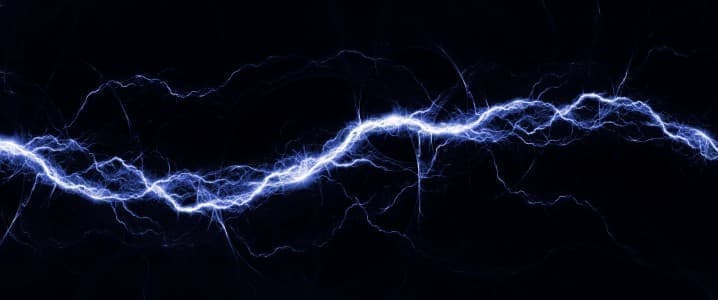Nuclear power is back in the headlines. Its proponents say, “We need renewables and nuclear. Maybe, though, not the same kind of nuclear as before. Maybe small modular nuclear reactors (SMRs).” Three distinct achievements in modular nuclear reactors made the news recently.
- Last month the NuScale SMR, submitted updated licensing materials to the US Nuclear Regulatory Commission (NRC) for a power uprate of its six module VOYGR SMR. NuScale previously received NRC approval for a 12 reactor module design. Each module produces about 77 MWs.
- Separately, the GE-Hitachi designed SMR, the BWRX-300, received four new orders for its reactors from Poland, the TVA, and two for Canada (Saskatchewan and Ontario). Other Eastern European nations are also reviewing this design for possible order at a later date.
- Finally, we note the consideration of using nuclear power for urban district heating in the US and Europe. (In Russia almost 70% of heating is provided by central station power plants, a good percentage of them nuclear.)
These are important milestones from the perspective of regulatory approvals and the beginnings of commercial acceptance. The early stage of new technologies is always filled with promise, promotion, and wonder. But as we know not all new technologies ultimately pan out or do so in time frames acceptable to commercial investors. What would constitute a measure of success for the emerging SMR technology? What uses of it make the most sense today? And, will it scale? That is, will adoption of this diminutive nuclear technology be sufficiently widespread so as to be commercially self-sustaining?
There may be roughly 70 different permutations of SMRs being considered around the world today. But they all use either water, molten salts, or sodium as a moderator for the nuclear reaction. Too much variety makes it more difficult to achieve scale.
In considering scale, let's first consider the installed generation base in the continental US of about 1200 GWs. We assume that achieving scale in power generation equals 5% or 60,000 megawatts. That translates into about 120 NuScale VOYGR 6 module units or 200 new GE-Hitachi SMRs, definitely a large number of prospective power plants. Could this number of power plants actually be (profitably) deployed and if so, where? The answer may be in district heating. The US Energy Information Association (EIA) estimated there are about 660 district heating and/or cooling systems operating throughout the US in every region of the country. At present they are fueled mainly by natural gas and coal and typically serve large, multiple location commercial facilities like universities or hospital complexes.
Related: U.S. Drilling Activity Continues To Slow
The main advantage to district heating is that it replaces multiple boilers or furnaces with one large power plant distributing steam and hot water via underground pipes. The piped steam or hot water is then distributed to consumers. Conceptually district heating systems closely resemble today’s electric utility with its central station power, transmission, and distribution network. They are common in Eastern Europe and Scandinavia. A nuclear powered facility of this type would offer the benefit of zero CO2 emissions, improved air quality, reduced dependence on costly fossil fuels, and hopefully lower capital and operating costs.
And that brings us to our financial conclusion. First, no matter how one configures it, new nuclear power plant construction isn’t cheap. The GE-Hitachi website promoting their SMR claims it will be 50% cheaper than current large scale reactors—still much more expensive than conventional power plants on a capital cost basis. But this exemplifies the current promise of nuclear energy. It offers a trade off. Higher upfront capital (i.e. construction) costs today in exchange for zeroing out decades of future fossil fuel expenses—which on a thirty or forty year life of plant is a substantial saving. Right now, district heating may represent the most economically viable use for SMRs, especially since the piping and distribution infrastructure already exists in so many places around the country. Bottom line? Even a modest acceptance of SMRs (replacing coal and gas boilers) by the numerous but geographically dispersed district heating systems in the US would help the industry attain a self-sustaining scale.
We would be remiss in not mentioning the issues of waste disposal and siting. With so many varieties of SMRs under consideration, none with a long term operating record, it is difficult to generalize on waste production and disposal, but some studies indicate that SMRs will produce more waste than conventional reactors. Waste disposal, then, should be part of the cost analysis, although As for siting, if the government wants SMRs in operation, it will take over the waste disposal problem (as it did unsuccessfully for wastes from conventional nukes). As for siting, district heating facilities need to be located near the users. Will local governments in the US permit SMRs near urban areas? That may be the biggest question mark of all.
In a way, district heating systems resemble the technological arc of battery electric vehicles. They both achieved substantial market penetration in the late nineteenth and early twentieth century and then were subsequently eclipsed by other technologies. But they both are seeing a huge resurgence of interest. What’s next, trolleys?
By Leonard Hyman and William Tilles for Oilprice.com
More Top Reads From Oilprice.com:
- Russian Urals Traded At $49.48 in January, But The Kremlin Isn’t Worried
- Germany’s Largest Gas Storage Facility Can’t Store Gas
- Germany’s $2 Trillion Economic Miracle at Risk


















